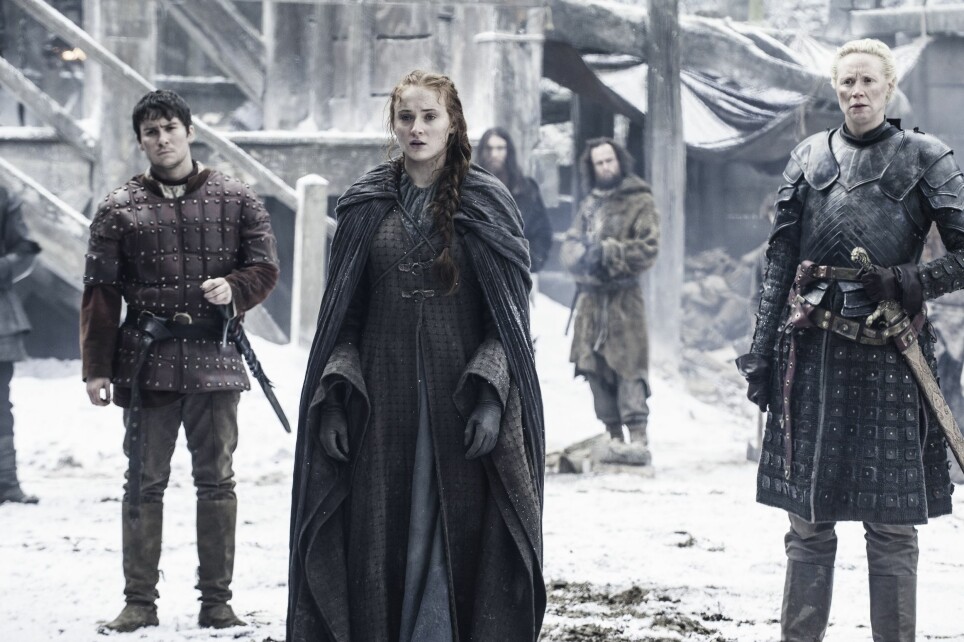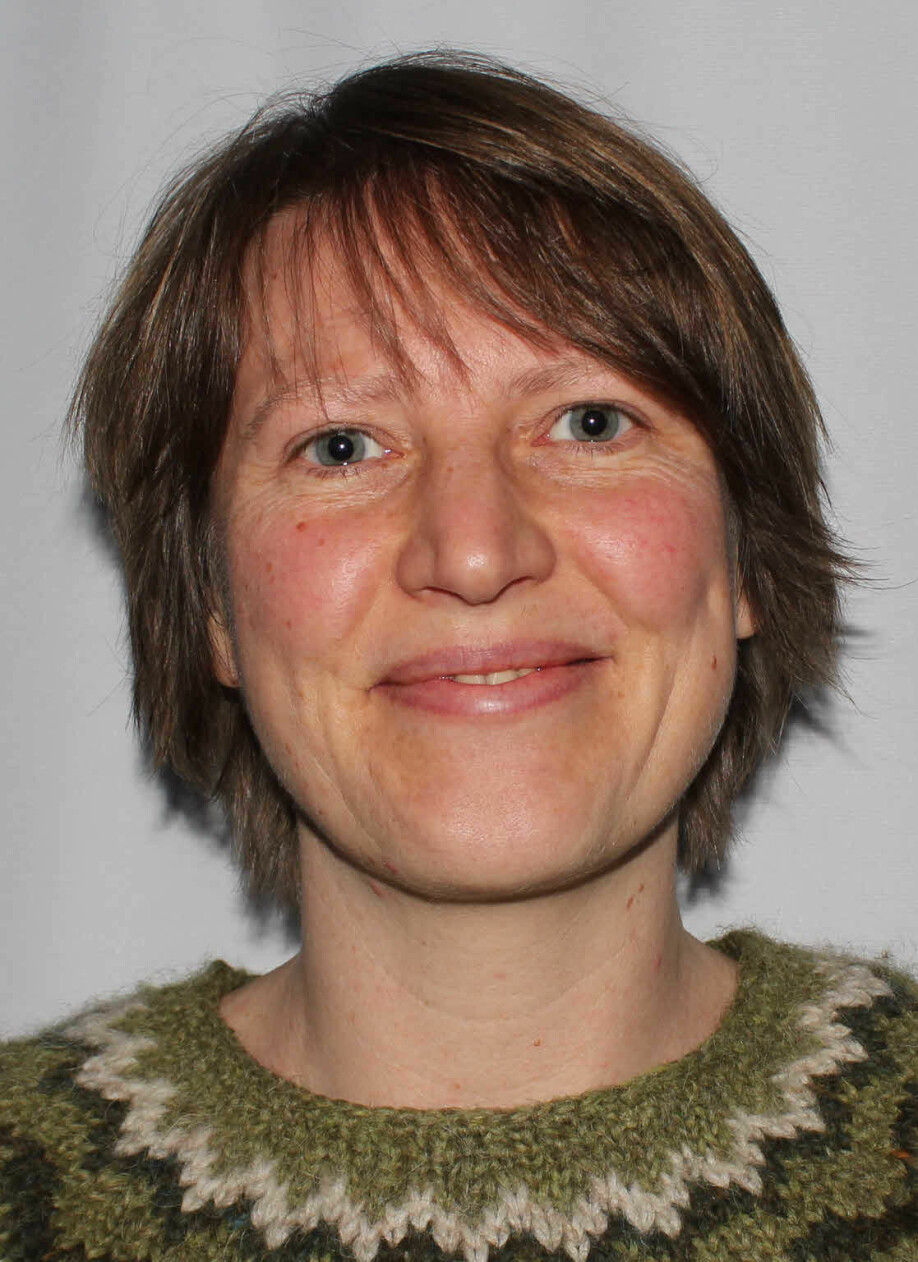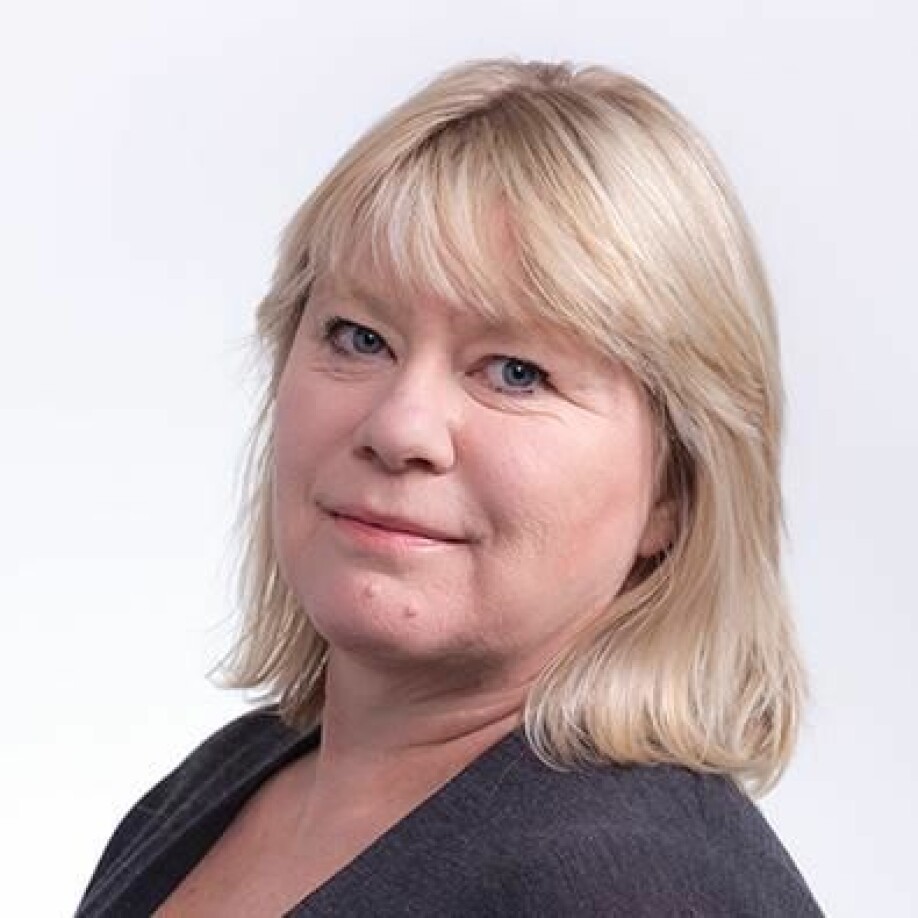
Game of Thrones tampers with traditional gender roles
The science fiction genre is able to move the boundaries for how we see the world, according to Ingvil Hellstrand.
“People’s interest in science fiction, both as literature, film and TV series, has increased considerably since the COVID-19 pandemic broke out,” says Ingvil Hellstrand.
Hellstrand is associate professor at Centre for Gender Studies at the University of Stavanger. She has studied science fiction since she wrote her PhD thesis on the topic in 2015.
Recently, she published an article in the Norwegian journal of media studies, Norsk medietidsskrift, in which she explores the TV series Game of Thrones and Black Mirror.

Increased interest in dystopias
“TV series and films thematising the end of the world or dystopic situations seem to appeal particularly to the audience right now.”
According to Hellstrand, this is probably because the genre offers room for both entertainment and reflection.
“Due to the pandemic, we now live within a scene of horror. We have been struck by something we could not have imagined. An external threat, beyond what is normal, but often thematised in dystopic fiction,” she says.
“The pandemic has brought along an upheaval of what we used to think of as reality. It will therefore be interesting to see what will be the new topics in the science fiction genre in the time to come.”
Hellstrand explains that more and more people research and produce within the genre, both in terms of literature and film. The interest has increased steadily over the past twenty years, according to Hellstrand.
“It think it has to do with the fact that the genre has gained an important political function through major societal challenges such as environmental protection, endangered species and colonialism.”
Complex characters
Hellstrand says that she has been looking for an occasion to write about Game of Thrones for some time. The the series is set in a fictional fantasy world, following the battle for the Iron Throne.
The characters in the series break with traditional narrative structures that we find in fairy tales.
“Game of Thrones has fascinated me for a long time. In my opinion, there are several things in the series that tampers with traditional boundaries for how we represent the world, such as the choice of characters and their development,” she says.
“For instance, the characters in the series break with traditional narrative structures that we find in fairy tales. They are more complex – the evil are not just bad, and the good are not just kind.”
Moreover, traditional gender roles are addressed and negotiated in the series, according to Hellstrand.
“We encounter a cast of characters with several untraditional female roles, such as the many female leaders and main characters,” she says.
Women as knights and murderesses
“For instance, the series has a female knight – Brienne of Tarth, who conveys her experiences of not being like other girls when she grew up. She is systematically harassed because she is too big and too ugly for a woman.”
Hellstrand maintains that both viewers and actors have expressed a wish for more characters that can challenge traditional gender roles and their scope of action.
“Particularly by women, but by men too. And the characters in Games of Thrones show that it is possible to be women and men in many different ways,” she says.
“Take the character Arya Stark, for example. She is not interested in doing regular girly things, but she is a skilled rider and eventually becomes an assassin. Her older sister Sansa, on the other hand, has always just dreamt of being a bride, and she ends up as a queen.”
Through these two, and several of the other female characters, the heteronormative dream of being happily married is tampered with. However, the pattern of gender roles in Game of Thrones is nevertheless primarily a traditional one, according to Hellstrand.
“The Game of Thrones universe is medieval and not very alternative. It primarily revolves around the fight for power and control,” she emphasises.
“But the traditional gender roles are demonstrated and made visible, and therefore also debated.”
Speculative fiction and fable prose
In her article, Hellstrand applies the term speculative fiction as an umbrella term to denote fiction about alternative realities and social structures, or from other galaxies.
“Game of Thrones, for instance, is more fantasy than science fiction. Another good generic term for the genre is fable prose, launched by the Norwegian science fiction writers and experts Jon Bing and Tor Åge Bringsverd,” she explains.
The genre provides an opportunity to reflect freely around social frameworks.
Hellstrand also applies the term ‘worlding’, which she has borrowed from the feminist theorist Donna Haraway.
“Worlding refers to the act of creating a world in which you move the boundaries for how we normally understand societies, but Haraway applies it in a more political sense,” says Hellstrand.
In Haraway’s works, the term is used to include various creatures, technologies and knowledge in a way that challenges our western worldview. In this way, traditional power relations between humans and technologies, humans and nature, and between humans in general are destabilised.

Provides room for free reflection
Anne Gjelsvik is professor of film studies at Norwegian University of Science and Technology (NTNU). According to her, speculative fiction provides a unique opportunity to challenge traditional gender roles within literature and film.
“The genre provides an opportunity to reflect freely around social frameworks, and you can easily address gender roles when you construct worlds in this way,” she says.
She and colleague Rikke Schubart have edited the book Women of ice and fire, in which they address gender perspectives in Games of Thrones, both the book and the TV series.
“The Game of Thrones universe opens for a vast number of female characters that are not possible within a realistic narrative, such as a female warrior and a dragon queen.
The dragon queen, or Daenerys Targaryen, is represented early in the series as a potentially liberating character, Gjelsvik explains.
“Daenerys is given away in marriage, but gradually finds her own place as a queen with dragons – which may be interpreted as a symbol of power and freedom.”
Traditional and untraditional
According to her, Games of Thrones is both traditional and untraditional when it comes to gender roles.
“The universe is placed in the Middle Ages and established as a traditional patriarchal structure. Sons inherit their fathers’ positions, properties and gold, whereas the women are given away in marriage,” she explains.
“But in addition to this, the universe provides opportunities for women to operate within this world in a way that breaks with historical and realistic frameworks, for instance as a warrior or a witch.”
According to Gjelsvik, the author George R. R. Martin contributes with an important corrective to a genre that has primarily addressed boys and men, by creating alternative spaces for women in his book series.
“Unfortunately, I think the feminist potential has been reduced in the transformation from book to film, among other things through the ways in which they have represented women’s bodies,” she says.
“Nudity and rape scenes are represented in a way that is adjusted to commercial entertainment requirements, and therefore partly contribute to objectifying women.”
Feminist fairy tales
Ingvil Hellstrand also applies the feminist writer Angela Carter as a point of reference in her study. In 1979, Carter published the book The Bloody Chamber, in which she retells famous fairy tales, but with a feminist twist.
“I repeatedly return to Carter’s conscious relationship to the norms and the power relationships in the fairy tales.”
They do not make a number out of the fact that they are all coloured. It is just the way it is.
She refers to the fairy tale about Little Red Riding Hood, with the message that Little Red Riding Hood’s disobedience has consequences. She has been told to stick to the path and avoid talking to strangers, but she does the complete opposite.
“In Carter’s reproduction, Little Red Riding Hood has become an erotic fairy tale, in which the girl’s dilemma is whether to choose obedience to her family or to follow her desire for the bad-boy and son-in-law-from-hell character The Wolf,” says Hellstrand.
Behind the mirror
The TV-series Black Mirror consists of a number of independent episodes. In one of the episodes, the action takes place in a nursing home for elderly and dying people in a futuristic welfare state, Hellstrand explains.
“The patients are offered a stay in a virtual reality, which involves entering into another universe. Here, the terms of the narrative are changed utterly; for instance, the characters regain their young, healthy bodies.”
“In this episode, two women find each other. They have been living in the closet as lesbians in heterosexual relationships their entire lives. In the virtual reality they can finally live out their true feelings.”
The story is neither positive nor negative, but it nevertheless challenges the boundaries for what we perceive as normal, according to Hellstrand.
“It gives the characters the opportunity to realise their homosexual love in a kind of afterlife, and shows that it is not necessarily easy to live queer lives.”
Another episode has only black characters.
“This contributes to moving our boundaries for what is normative, by showing a universe consisting solely of a black middle class,” Hellstrand explains.
“They do not make a number out of the fact that they are all coloured. It is just the way it is. The centre is moved. The fact that all of this is perceived as abnormal is just depressing. And the fact that this is science fiction is also problematic in itself.”
Challenges traditional narratives
In general, we are witnessing an interesting turn within the science fiction genre, for instance through what is called Afrofuturism and Indigenous sci-fi, Hellstrand maintains.
“Here, the authors and series producers use suppressed groups or non-western societies to challenge who or what is placed in the centre of the narrative,” she says.
“In this way, the genre challenges what is true and valid by demonstrating different possibilities and perspectives than the traditionally western ones.”
Hellstrand points to the Norwegian-Tamil author Tharaniga Rajah as an example. In her dystopic novel Det er lenge til skumring (‘There is a long time till twilight’), Rajah has placed the narrative plot in Finnmark following a war between Norwegians and Sami.
“The Norwegians have lost the war and the Sami have taken back their land. In this way, Rajahs novel represents an interesting turn within the genre through the use of an indigenous society, and demonstrates that colonialism is a relevant topic also in Norway.”
Translated by Cathinka Dahl Hambro.
This article was first published on Kilden kjønnsforskning.no






























